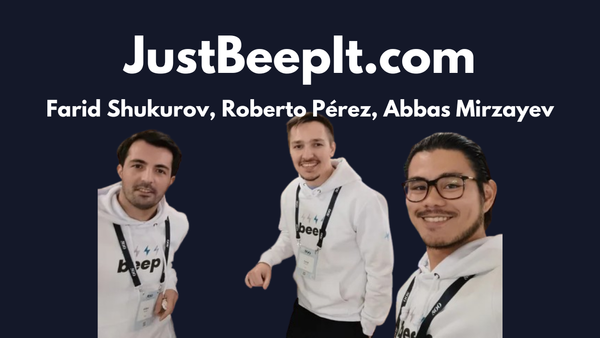How to turn a failed product into a successful SaaS - Testimonial ($70k MRR)

Today’s case will be about “Testimonial.to” a SaaS that allows companies to collect testimonials from their customers to build social proof.
It was founded by Damon Chen, a Software Engineer who worked for 8 years at Cisco before quitting to pursue his dream of building a successful startup. However, before quitting, he made a promise to his wife: if he didn't make $100k annually within a year, he would return to his job.
The challenge was on, and the clock started ticking… ⏰
Damon did a brainstorming and started launching products that seemed like they could be useful and therefore successful:
He began with “Indielog”, but it failed.
After that, he launched “Howdy”, it failed too.
Next, he launched “Influeswer”... it failed.
Then, he launched “Backlogs.co”… guess what? Yeah, you’re right! It failed too.

Damon tried out 4 projects but he generated no income, or to be more precise, he generated $1.99. It was at the fifth attempt where he began to see some traction: “Testimonial.to”.
The birth of “Testimonial” 👶
The idea came up after failing four projects, when he realized that while he was able to build the products, he lacked the skills to market them. He quickly thought about leveraging social proof. Believing that creating a product to help indie makers and business owners collect testimonials, especially videos, and providing them with a way to share these testimonials on their websites would be helpful.
One big reason I created @testimonialto is to help myself sell. I don't know how to do marketing and sales. Using testimonials to convert prospects becomes a shortcut for me!
— Damon Chen (@damengchen) June 21, 2022
Here are 5 reasons I think you should add testimonials to your site too 👇https://t.co/ojZv1y941m
Damon began building the SaaS, reusing a lot of code from his first project 'Indielog' (If this doesn't sound familiar, check out Case Study 3).
After three weeks, he already had an MVP.
He launched 'Testimonial' in December 2020 and shared it on Product Hunt. In the first 10 days, he made $3k with a Lifetime Deal (one-time payment for lifetime usage).
I shipped all these apps in 2020. Most of them generated $0.
— Damon Chen (@damengchen) December 31, 2020
🎬 https://t.co/JAhXqsuu6h $0
🌍 https://t.co/BrNUAhfiIT $0
💡 https://t.co/ZWcLfOH4aI $0
🐞 https://t.co/aghOxYEcPI $1.99
👍 https://t.co/2JhJLe27pW $3,025 in 10 days.
But that's ok, just keep shipping! My stories👇
Damon attracted early users by quickly launching an MVP, sharing his progress, and listening to user feedback. He added features that appealed to his target audience and continued this process. This approach reflects product-led growth and is worth considering for building your startup.
Do one of these to have Product Led Growth 👇
— Damon Chen (@damengchen) July 6, 2022
1. Add your brand logo to social sharing images
2. Add the powered-by logo to embed widgets
3. Allow users to share your product under your domain pic.twitter.com/vKCXmosr22
To the moon 🌔
Seeing the traction he had on the first days, it was the moment to scale the project.
The first move he did was to switch from a One-time Payment model to a Subscription model. And, the next thing was to market the product.





